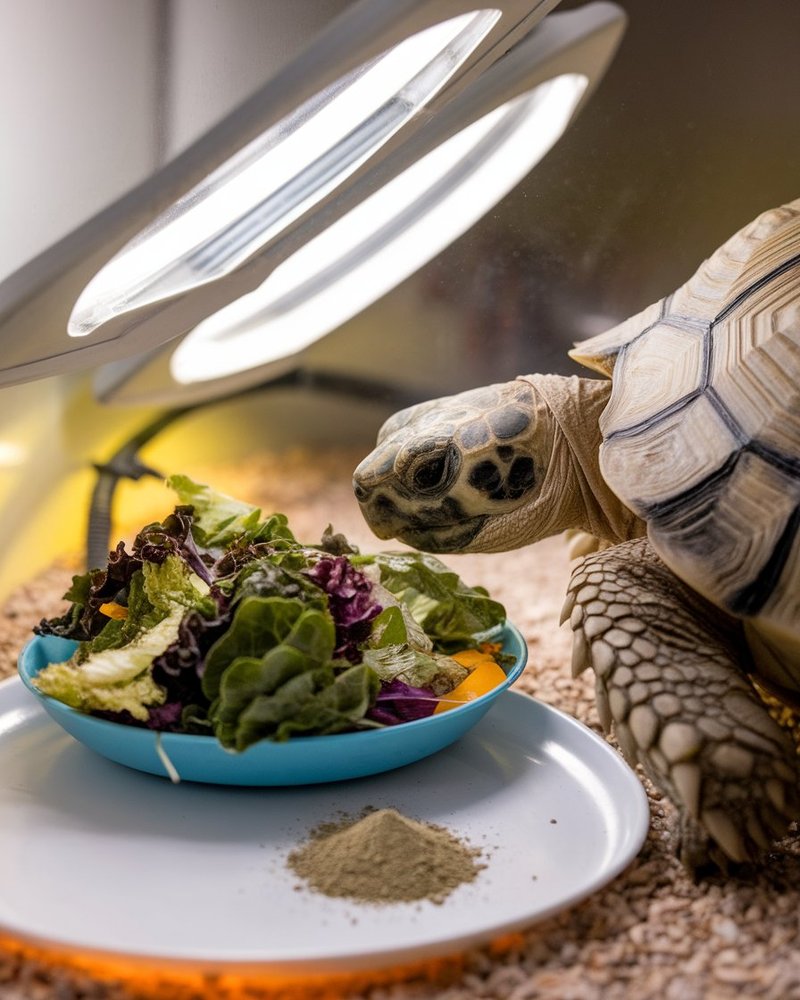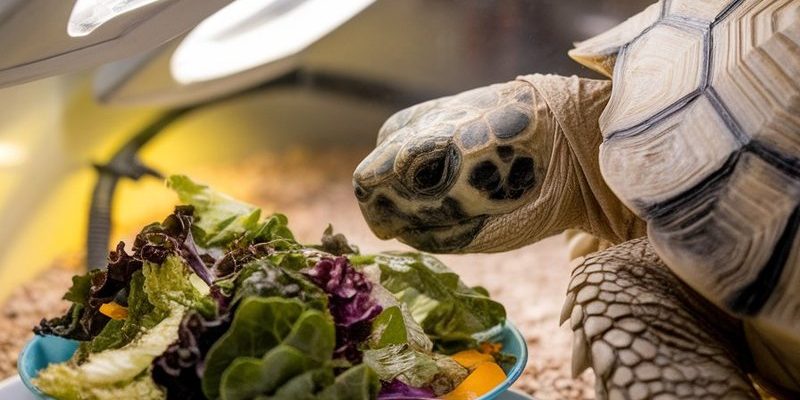
So, what’s on the menu for your Russian tortoise? Here’s the scoop: they’re primarily herbivores, so their diet consists of a variety of leafy greens, vegetables, and some fruits. However, you can’t just toss whatever greens you find at the store; it’s essential to understand what’s good for them and what can be harmful. Let’s dive into their feeding habits, how often they should eat, and some tips to keep your tortoise happy and healthy.
What to Include in Your Russian Tortoise’s Diet
Feeding your Russian tortoise isn’t just about quantity; it’s all about the quality of food. They thrive on a diet that closely resembles what they would eat in their natural habitat. Here’s the lowdown on what to include in their meals:
Leafy Greens: This should be the foundation of their diet. Greens like collard greens, dandelion greens, and mustard greens are excellent choices. They are packed with nutrients and fiber, which help with digestion.
Vegetables: Tortoises can munch on various vegetables, but they should make up a smaller portion of their diet. Think along the lines of bell peppers, zucchini, and carrots—just chop them up into bite-sized pieces. Remember, it’s a balance; too many high-sugar veggies can upset their digestive system.
Flowers and Weeds: In the wild, Russian tortoises would eat a lot of weeds and edible flowers. You might find them enjoying hibiscus or dandelions. These are not only delicious for your tortoise but also mimic a natural diet.
By mixing these options together, you create a colorful, nutritious feast that keeps your tortoise engaged and satisfied.
Safe Fruits for Your Russian Tortoise
While fruits are not a major component of their diet, they can be a delightful treat when given in moderation. You might be wondering what fruits are safe. Here’s a quick guide:
- Strawberries: A favorite among many tortoises, strawberries are sweet and enticing.
- Melons: Watermelon and cantaloupe offer hydration along with a tasty treat.
- Figs: Rich in fiber, figs can contribute to a healthy diet.
Just remember, fruits should be an occasional snack rather than a staple. Too much sugar can be harmful, so limit treats to once a week or even less.
How Often Should You Feed Your Russian Tortoise?
The frequency of feeding your Russian tortoise can make a significant difference in their health. Here’s the simple breakdown:
Young Tortoises: If you have a juvenile Russian tortoise (under three years), you should feed them daily. They’re growing fast and need the nutrients to support that growth. Offer them fresh veggies and greens every day, ensuring they have a constant supply of clean water.
Adult Tortoises: Once your tortoise reaches adulthood (over three years), you can switch to feeding them every other day. Adults can handle larger quantities less frequently. Again, keep an eye on portions to avoid overfeeding, which can lead to obesity.
Seasonal Adjustments: During the colder months, when they might be less active, you can cut back slightly. Tortoises can slow down their eating in winter, so listen to their cues. Adjust feeding times based on their activity levels.
Feeding regularly means your tortoise will be nourished, which helps them feel energetic and active.
Common Mistakes to Avoid
While caring for your Russian tortoise, it’s easy to make some common mistakes that can impact their health. Here’s what to steer clear of:
Overfeeding: It’s tempting to give your tortoise a big pile of food, especially when they seem eager to eat. However, overfeeding can lead to obesity and health problems. Small, regular portions are your best bet.
Feeding Inappropriate Foods: Not all greens are suitable for your tortoise. Avoid feeding them iceberg lettuce, as it offers little nutrition; it’s like offering junk food to your pet. Stick to safe options mentioned earlier.
Neglecting Calcium: Calcium is vital for tortoise health. They need a source of calcium to support shell growth and avoid disorders. Sprinkle calcium powder on their food a couple of times a week to provide this nutrient.
By avoiding these pitfalls, you’ll be well on your way to keeping your tortoise healthy and thriving.
Tips for a Happy Feeding Routine
Creating a delightful feeding routine can enrich your Russian tortoise’s life. Here are some tips to make mealtime enjoyable:
Variety is Key: Just like us, tortoises enjoy variety. Rotating the greens, vegetables, and occasional fruits keeps them interested in their meals. This variety also ensures a balanced intake of different nutrients.
Freshness Matters: Make sure all the food you offer is fresh and clean. Tortoises are not fans of wilted or rotting greens. Regularly check their food supply and replace any uneaten items daily.
Feeding Location: Choose a specific spot for feeding your tortoise. This helps create a routine and lets them know when it’s mealtime. Set up a little feeding area where they feel safe and comfortable munching away.
These simple tips can enhance your tortoise’s feeding experience, making it more enjoyable for both of you.
Hydration and Additional Care
While food is super important, let’s not forget about hydration. Your Russian tortoise needs fresh, clean water every day. You’ll want to provide a shallow dish that they can easily access without risking a slip and fall. Change the water daily to keep it fresh and encourage drinking.
Bathing your tortoise a couple of times a week is also a good idea. It not only helps with hydration but can also mimic the natural behavior of your tortoise. Just fill a shallow dish with lukewarm water and let them soak for about 20-30 minutes. This also aids in digestion and can help prevent urinary issues.
Observation is Key: Keep an eye on their eating habits. If your tortoise suddenly loses interest in food or shows signs of lethargy, it might be time to consult a vet. Regular check-ups can catch any health issues early on.
Feeding your Russian tortoise can be a rewarding experience when done right. By focusing on a balanced diet rich in leafy greens, vegetables, and the occasional fruit, you create a happy and healthy pet. Don’t forget to watch portion sizes and keep an eye on your tortoise’s behavior. With a little care and attention, you’ll find that your Russian tortoise will thrive in your care, bringing joy to your home for years to come. So, fill their bowl with love (and good food), and enjoy watching your tiny tank roam around happily!

